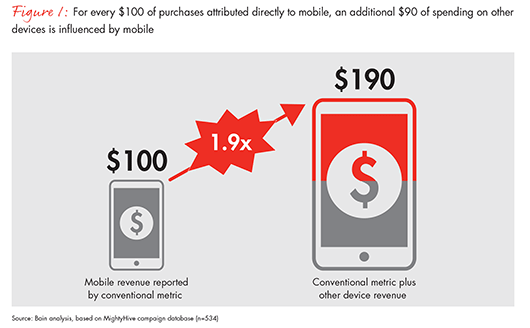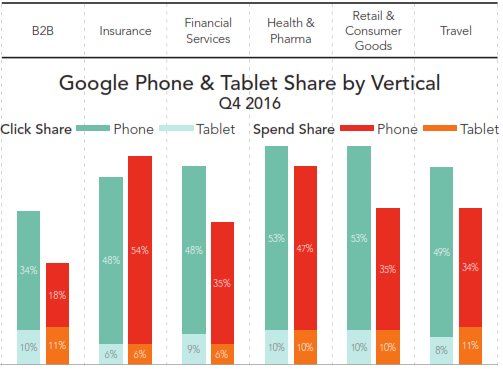Building on the micro-moments is what Google’s focus point was during their keynote session last year. The prospect of mobile marketing was speculated to be humongous along with a recurring deterrent – How to measure mobile success?

Then and now the question prevails as to how to determine mobile’s contribution in marketing campaigns. A reason why marketers can’t ascertain the value it brings on the table and thus might prefer investing on a device that displays tangible results.
Nevertheless, it might be interesting to know that
According to a Bain & Company survey, people interact with their phones an average of 13 times per hour. That means during the 16 hours or so people are awake, they’re doing something with their phones more than 200 times per day.
With such huge prospect what’s being missed out?
Firstly, the conventional metrics being used by advertisers point don’t give a clear picture of from where the conversion was initiated. This might misdirect the advertisers into investing in the device registered as the last step where the final conversion took place.
Secondly, even if a conversion is attributed to mobile, the metrics used to determine the success of a mobile marketing campaign is either CTR or conversion it garnered. The holistic picture again is missed here on how the campaign has impacted the purchase intent in the longer run. For instance, a user might see your ad on mobile, comes back few days later and directly visits your site. In this case, the campaign impacted the decision of the customer to finally visit the business site.
Knowing the underlying issue, consultancy firms have been trying to offer an estimate of how mobile’s performance outpaces other.
A Bain & Company analysis of 534 marketing campaigns shows that for every $100 of revenue attributed to mobile display ads by conventional metrics, an additional $90 should be attributed to mobile for purchases made on another device. By applying this 1.9x multiplier to the revenue attributed to mobile by conventional metrics, companies can get a better estimate of the power of the platform

How mobile influences a purchase intent, brand recognition, loyalty is worth putting to test.
So, what should you do to measure mobile marketing success?
1) Clearly define your KPIs to ascertain the value of your marketing actions. So,include tracking variation in website, mobile website or store visitors, mobile payments, SVR (store visitation lift), call volume etc. as a result of your mobile marketing campaign. These would be a far much better indicators of how mobile is impacting overall.
2) Track down cross-device behavior as Google suggests:
It’s critical to include this multi-device behavior in your attribution strategy. If you don’t, you risk over-investing in the device where the final conversion occurred or missing out on opportunities to win the sale.
3) Optimize your campaign for mobile by creating a standalone mobile website. Move a step further to be present in the moment and track with help of mobile analytics how your customer interacts with your mobile site.
4) Define your own attribution strategy. Don’t stick by the standard last click measurement tactic and determine just like how Red Lobster did:
Red Lobster couldn’t directly link specific purchases to mobile ads, it used store visits as a proxy to gauge the mobile campaign’s impact. Within the test areas, mobile users who saw a Red Lobster ad on their devices were 31% more likely than those who didn’t see an ad to visit a restaurant that day and 17% more likely to do so the next day.
5) Keep testing your mobile advertising campaigns and optimize it for ROI. Measure the overall impact of all your campaigns and don’t assign the recent conversions to a new campaign you created lately.
6) Further analysing your mobile website and mobile apps to understand user behaviour will give you insights into how to plan your mobile strategy better.
7) Using new mobile related features such as Google’s recent launch of Message Extension. With the scope mobile offers, utlizing such innovations could uplift the mobile campaigns.
Mobile Marketing – The next big thing is the CURRENT big thing
Mobile is growing YoY, and to miss out on this opportunity might be a setback. If a business wants to grow, then divulging into mobile will help meet that objective. Merkle’s Q4 2016, Digital Marketing Report suggests how industries are growing profoundly whilst investing in mobile:
Across six major industries, retail and health advertisers generated the largest share of traffic from mobile in Q4

Related Links:




Stop the wasted ad spend. Get more conversions from the same ad budget.
Our customers save over $16 Million per year on Google and Amazon Ads.